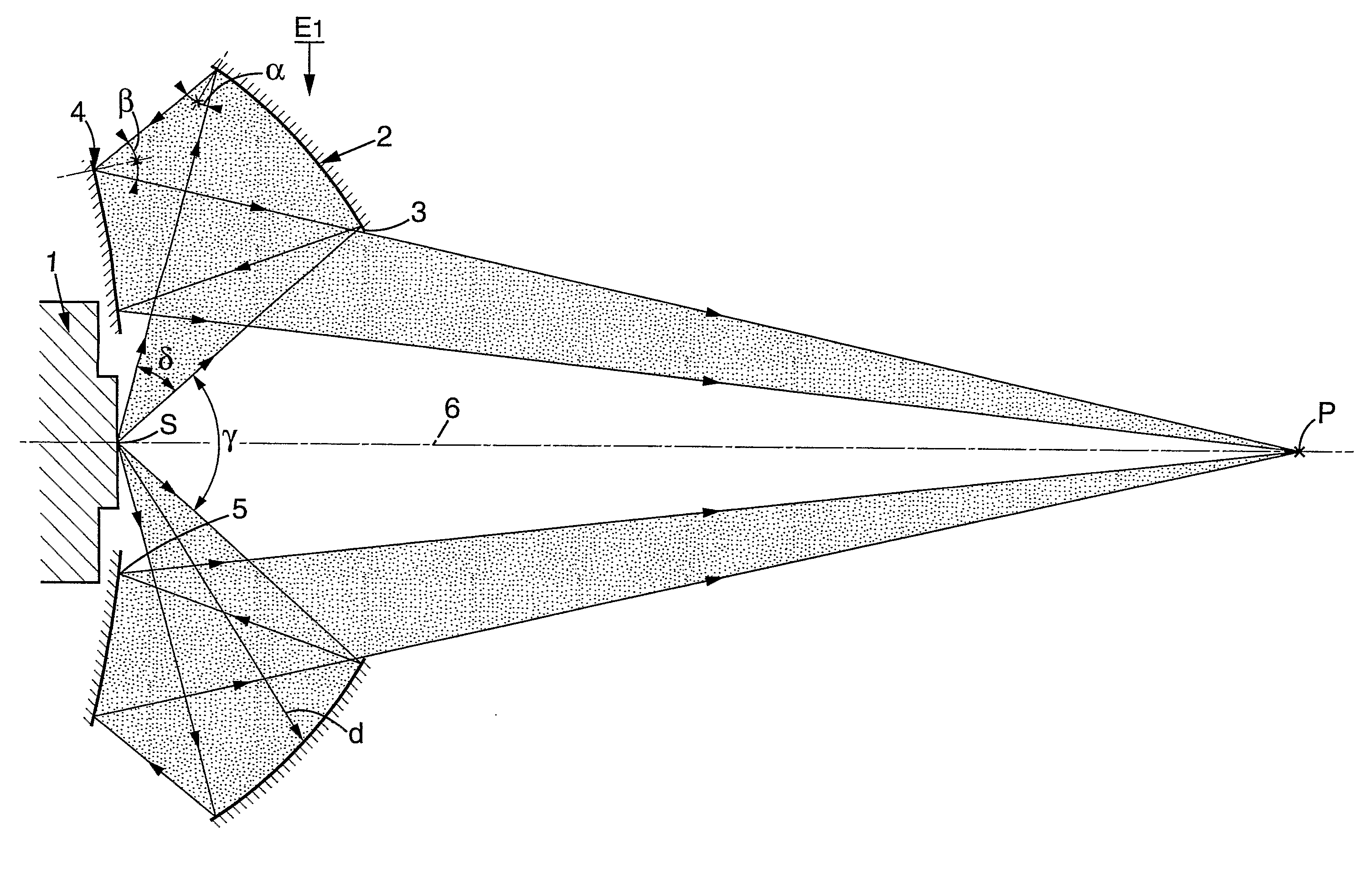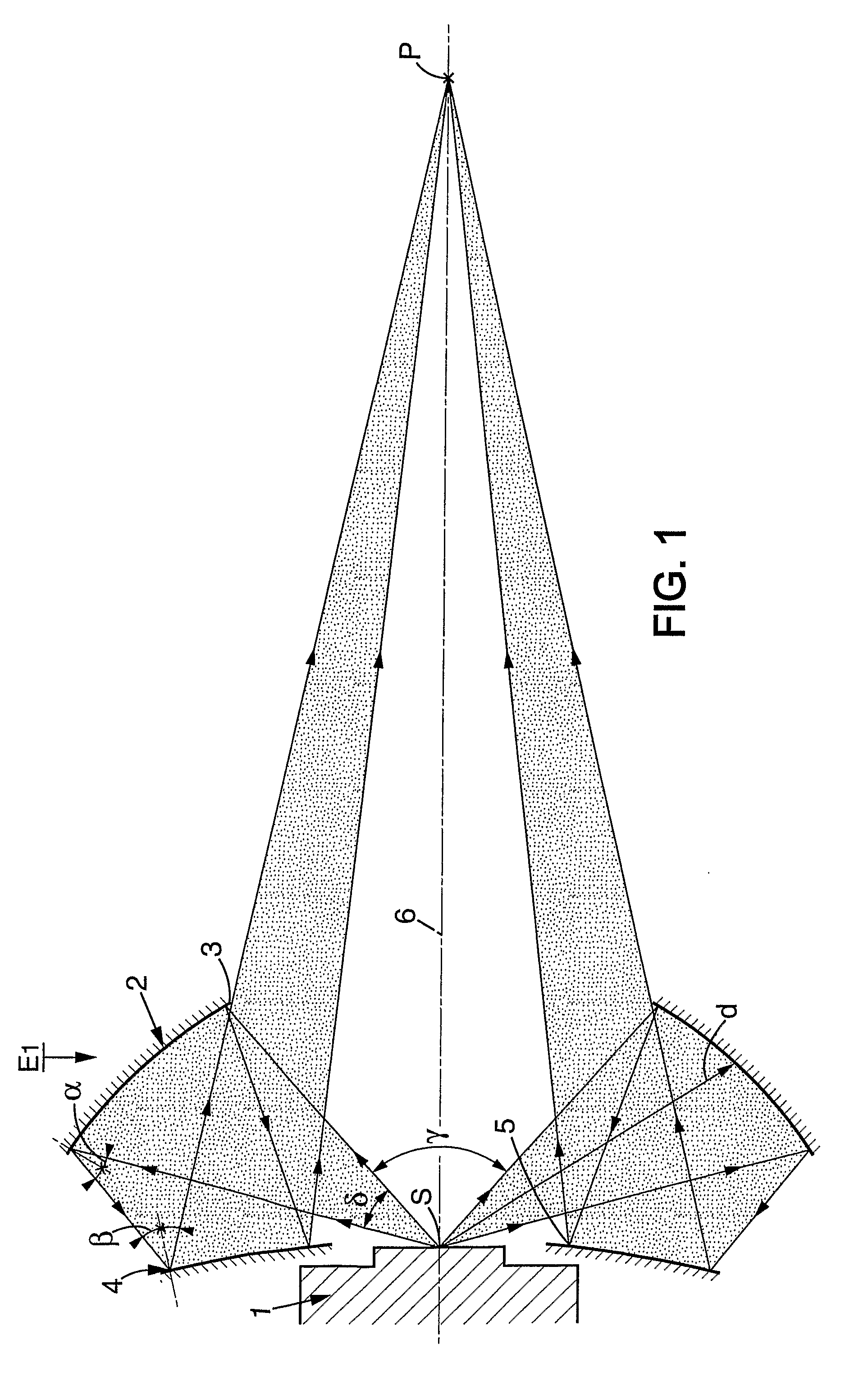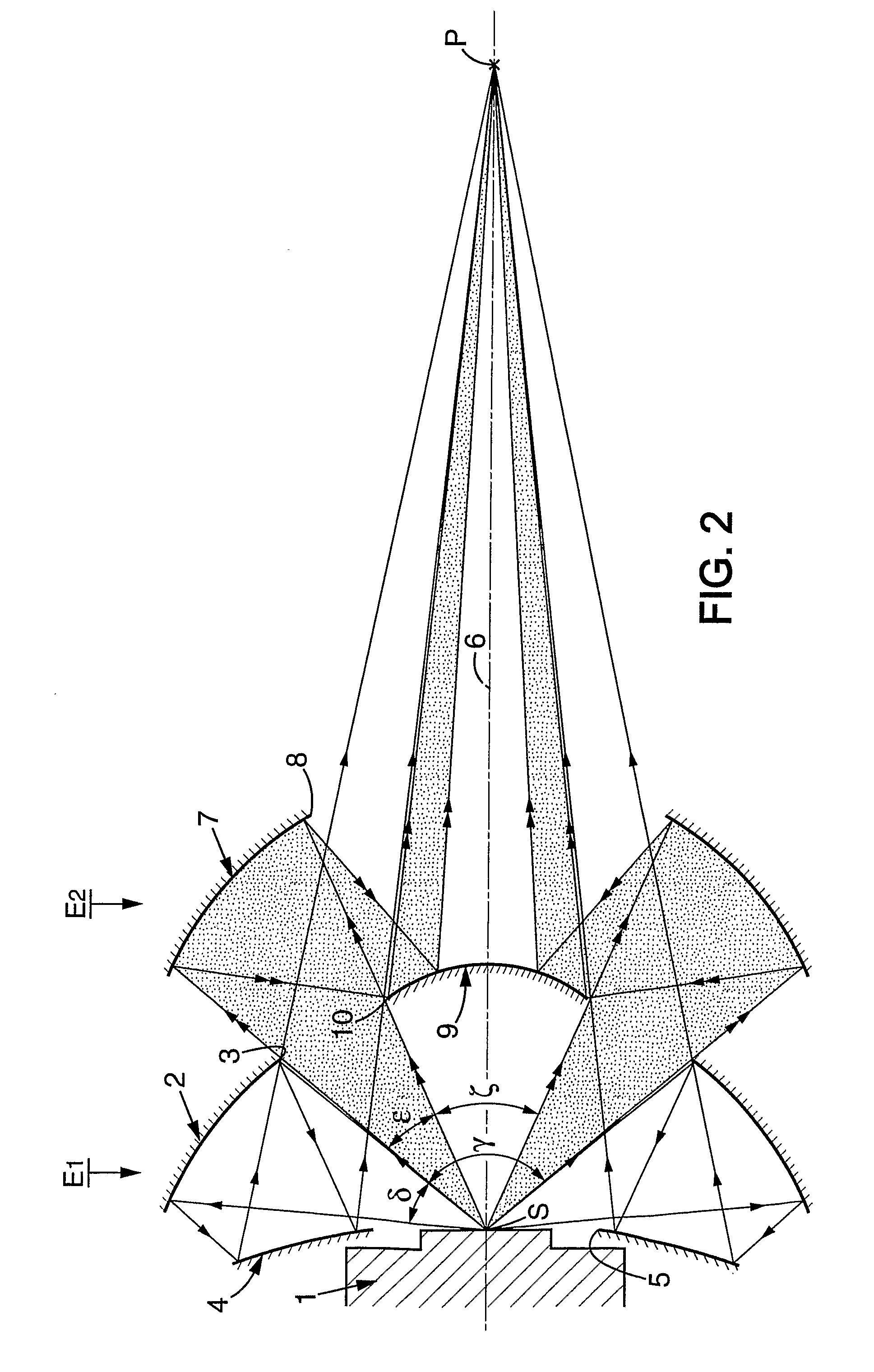Collecting the
luminous flux delivered by a quasi-pointlike source of electromagnetic
radiation such as an
arc lamp is not an easy thing to do when one wishes to collect the largest possible quantity of photons emitted by the source in the surrounding space.
Optical microlithography is typically a field for which expensive equipment must produce the largest quantity of
silicon microchips per hour by irradiating a photosensitive resin deposited on
silicon wafers from which the microchips will thereafter be sliced.
Another characteristic of EUV sources in view of the powers necessary for microlithographic applications is that they deliver many useful photons, but also other undesirable elements:photons situated outside the useful spectral band,ions and other particles ejected at high speed which may erode the surface of the optical elements placed too near the source,diverse debris that is also deposited on the surface of the optical elements of the
luminous flux collector device,an intense
thermal radiation, partially absorbed by the optical elements of the
luminous flux collector device which then undergo undesirable heating.
However, it cannot be transposed to the EUV domain for several reasons.
A first reason is that the flux collected is formed with the
radiation emitted by the source toward the rear, then reflected toward the front, that is to say it “crosses” the source and is focused in front of the latter; now, EUV sources are complex and bulky devices (typically 30 to 40 cm in
diameter for a luminous source point of about 1 mm): a source such as this placed at the focus of the ellipsoidal collector would block the flux reflected by the mirror.
A second reason is to do with the fact that the angles of incidence of the rays on the useful surface of the collector vary greatly according to the location of the reflection on the surface of the mirror, from quasi-normal incidence at the center of the ellipsoidal mirror to almost
grazing angles of incidence near the edge of the mirror; treatment of the reflecting surface so as to ensure reflection in the EUV region must therefore entirely change in nature between the center and the edge of the mirror, which is very complex, or indeed impossible, to achieve at least under acceptable economic conditions.
Therefore, despite its
advantage in principle, this solution cannot be employed.
Another drawback of this known technique is that, to pick up a significant portion of the light emitted by the source, the first elements must be brought near to the source: in devices made on the basis of this principle, the first optical elements are placed at a distance of 10 to 15 cm from the source and attacks by
erosion,
contamination or heating then become very serious; the effective lifetime of the
collector device remains limited (see for example document US 2005 / 094764).
This arrangement suffers from insufficient luminous collection effectiveness and does not constitute an appropriate response to the problem posed, in particular on account of the high angles of incidence of the rays arriving at the second convex mirror.
This known device suffers from a lack of luminous collection effectiveness due to a limitation of the optical extent collected by the large mirror and due also to too close a proximity of the
secondary mirror to the source itself, which hampers the course of the rays, as well as to the presence of various devices intended for capturing or deflecting the particles or debris emitted by the source.
The major drawback of this known solution is that it is inappropriate for sources of the “Capillary
Discharge Plasma” type, since the
optical path passes through the source, precisely where the optical, mechanical and electronic components operating the source are housed.
This known device therefore has limited conditions of use which may be inappropriate within the context of a microlithography installation.
This known device does not provide an
effective response and does not obviate the resulting drawback of the high degree of deformation of the
optics under the thermal flux of the source.
In a general manner, none of the currently known devices is capable of collecting an appreciable fraction of the luminous flux emitted by the source, and their effectiveness remains limited to a few percent and / or they are arranged in a manner such that some at least of their components are rapidly impaired and / or they are too cumbersome for the application more specifically envisaged in the field of microlithography.
The constraints inherent in integrating the collector device into a microlithography
machine operating with an EUV source should also be remembered: impossibility of implementing optical lenses, no material being transparent for these wavelengths, and necessity of implementing reflecting optical components only; bulky source which requires that the entire optical collection hardware be situated in front of this source; very congested environment which leaves only a restricted
free space for setting up the optical collection components; focusing distance (typically of the order of 1.20 m) which is not capable of being appreciably lengthened because of the constraints of general congestion within the
machine.
 Login to View More
Login to View More  Login to View More
Login to View More 


